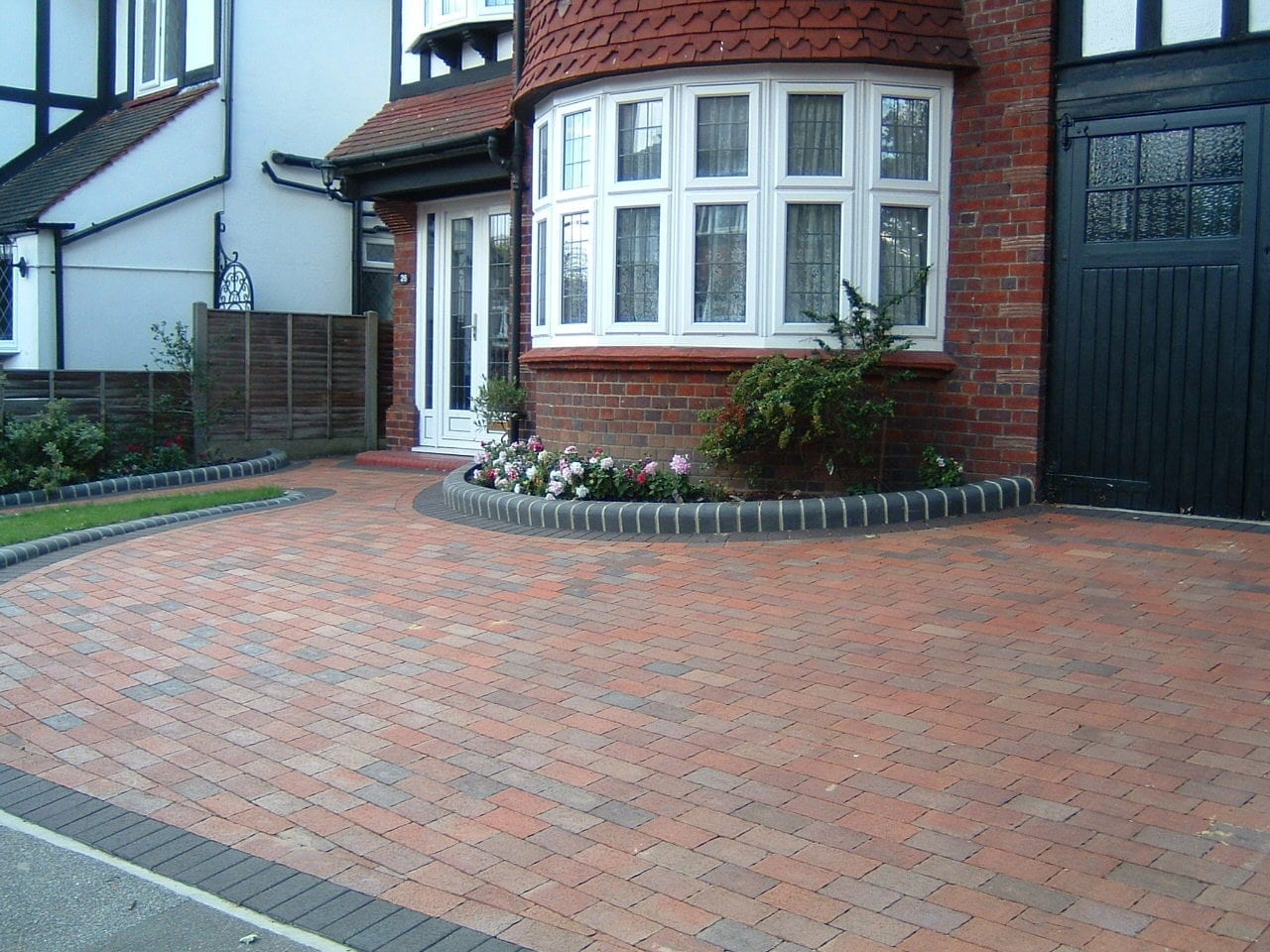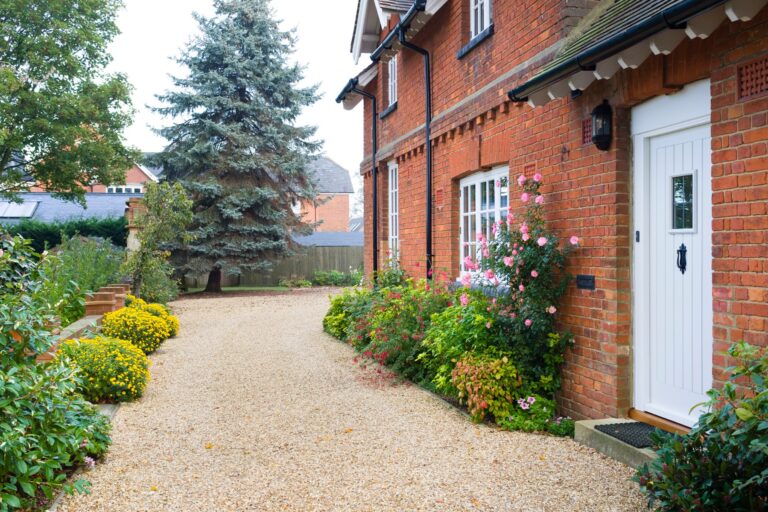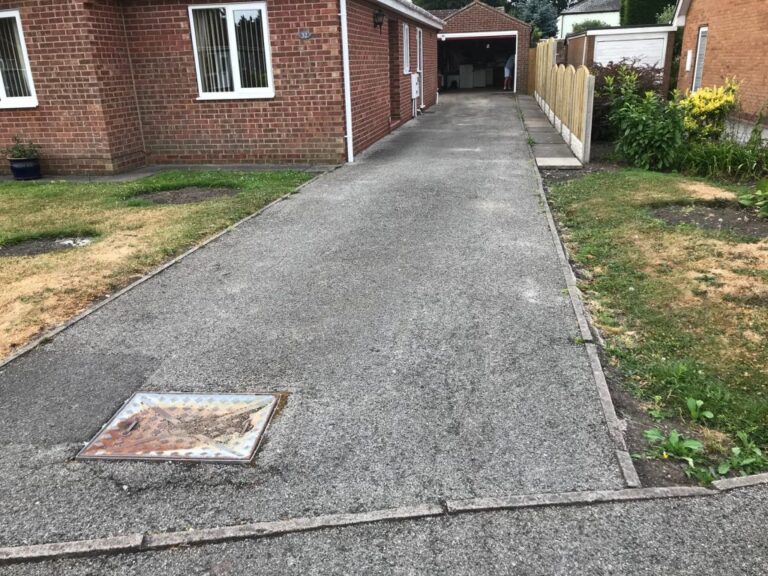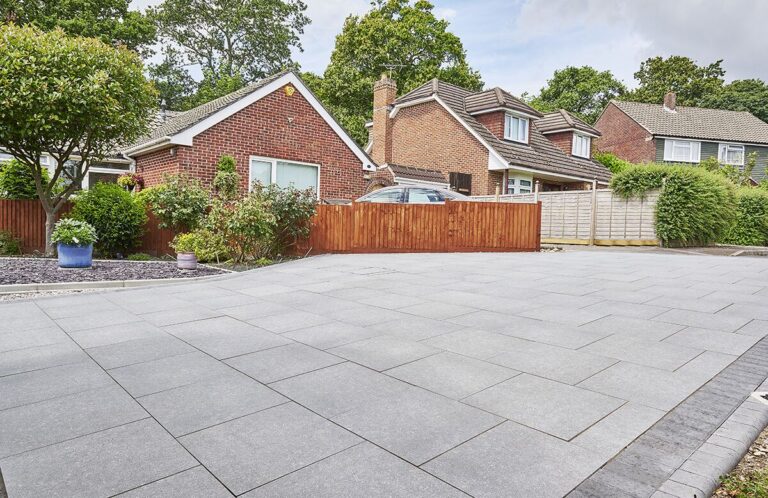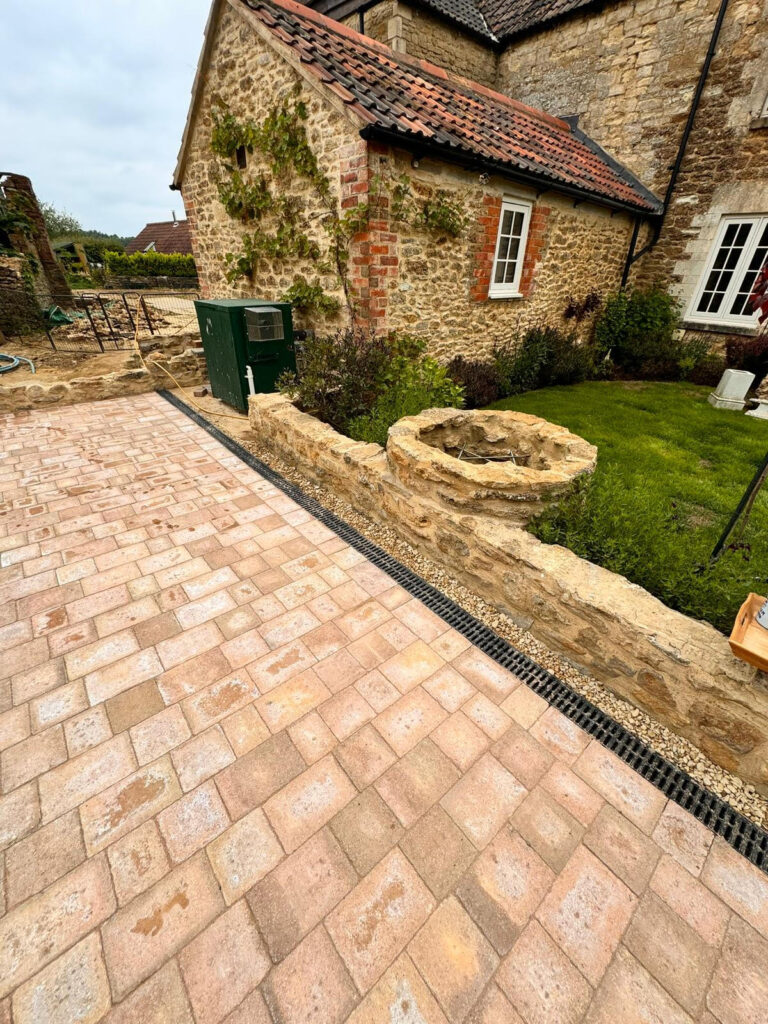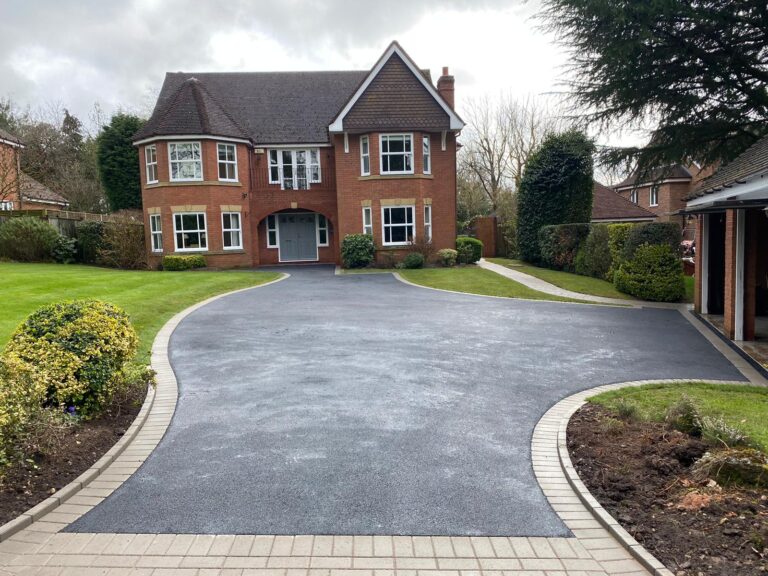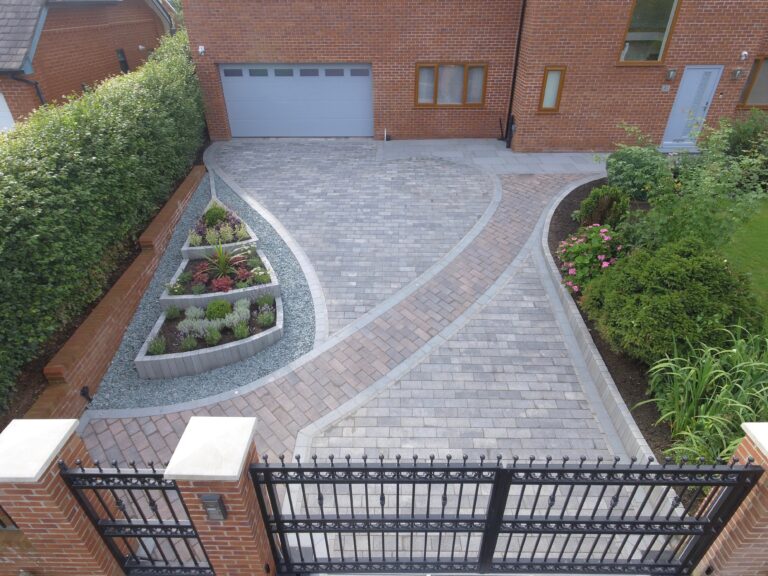When you have limited space for your driveway, it can feel like a challenge to create a functional and stylish parking area.
However, with the right design ideas and a bit of creativity, you can maximise your space and still achieve a driveway that enhances your home’s curb appeal.
In this article, we’ll explore some clever and space-saving driveway designs that will help you make the most of a small area.
1. Opt for a Single Car Driveway Design
If you’re limited on space, a single car driveway design might be the most practical solution. By focusing on a smaller, more compact design, you can ensure that your driveway fits seamlessly into your available space while still allowing you to park a car comfortably.
What to do:
- Maximise parking space: Create a streamlined design by using materials that allow you to park close to the edge of your property. Consider a straight driveway layout that leads directly to your garage or entrance.
- Widen narrow areas: If your driveway feels too tight, you can extend the driveway slightly to accommodate parking. This may involve moving a fence, wall, or hedging slightly to open up more space.
2. Use Permeable Materials for a More Efficient Driveway
For small driveways, it’s essential to choose materials that make the most of the space while providing excellent drainage and longevity. Permeable paving materials are an ideal option for compact driveways because they allow water to flow through the surface, reducing the need for complex drainage systems.
What to do:
- Consider gravel or permeable block paving: Gravel is an affordable and low-maintenance option that works well for small driveways. Alternatively, permeable block paving provides a clean, solid surface that allows water to drain through while still looking polished.
- Choose a material that complements your home’s exterior: Select paving materials that blend well with your home’s overall design to create a seamless, stylish look. Neutral tones such as grey, beige, or sandstone tend to work well in a variety of settings.
3. Narrow Driveway Designs for Small Frontages
If you have a narrow frontage but still need to park a car, you can design a driveway that fits within these constraints by considering a narrow, long design. This works particularly well for properties with small frontages or terraced houses in urban areas.
What to do:
- Create a long, linear design: A straight, long driveway with minimal turns or curves will help you maximise the limited width of your property.
- Use space-efficient materials: Choose materials that don’t take up extra space, such as slim-line pavers or gravel. Avoid bulky materials that could make the space feel even smaller.
4. Use Vertical Space to Maximise Storage
If your small driveway is attached to your home and has a little extra vertical space, consider adding vertical elements like climbing plants, a wall-mounted bike rack, or hanging planters. This allows you to keep the ground level clear and free up more room for parking while adding an aesthetic touch.
What to do:
- Incorporate greenery: Install climbing ivy or use plants in vertical planters to add colour and texture without taking up valuable space on the ground.
- Consider built-in storage: Wall-mounted shelves or hooks can help keep outdoor equipment out of the way, giving you more usable space for parking.
5. Consider a Two-Car Tandem Driveway
If you need space for more than one car but still have limited space, a tandem driveway design might be the solution. This design involves parking one car in front of another, meaning the space is used more efficiently, especially if you don’t often need to park both cars simultaneously.
What to do:
- Design a parallel layout: Arrange the driveway in a way that allows you to park cars end-to-end, leaving room for movement around them.
- Install a gate or sliding fence: If privacy is important, consider installing a gate or sliding fence at the front of the driveway to keep the second car securely parked while not in use.
6. Lighten Up with Smart Lighting
Lighting can play a huge role in creating a more spacious and inviting feeling for your driveway. By adding clever lighting, you can create an illusion of space and improve safety for evening arrivals.
What to do:
- Install ambient lighting: LED strip lights along the edges of the driveway or discreet, low-level lights installed in the ground can create a sense of depth and light up the area at night without overwhelming the space.
- Use uplighting for vertical features: If you have trees or decorative elements in your small driveway, uplighting can emphasise these features and make the area appear taller and more expansive.
Designing a driveway for a small space doesn’t mean you have to sacrifice style or functionality.
By choosing the right materials, making clever use of vertical space, and selecting space-efficient design elements, you can create a driveway that works for your family while enhancing the overall aesthetic of your home.
With these thoughtful design ideas, your small driveway can still make a big impact.

